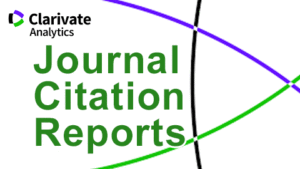Bibliometrics
Journal Impact Factors (JIF), Quartile rankings and altmetrics
Journal Impact Factors (JIF) are relatively simple bibliometric parameters of journals, based on citations received by the journal during recent years, but they are quite important as a measure of the (relative) scientific status of a journal.
While many derivatives and alternatives exist (based on larger time windows or other databases like e.g. Google Scholar), the official JIFs were originally created by – and are still defined by – the Journal Citation Reports (JCR) published by Clarivate Analytics Web of Science (WoS). Although this database contains some 12,000 journals, many thousands of journals are not (yet) represented and thus do not carry an ‘official’ JIF. Journal Citation Reports are published once a year, generally in June. Currently the most recent JIFs are those for the year 2023 (published in June 2024).
In addition to JIFs, quartile rankings offer another way to assess journal impact. They divide journals within a specific subject category into four groups (Q1 to Q4) based on their impact factor. Journals in the Q1 quartile represent the top 25%, highlighting those with the highest relative impact in their field.
Other useful metrics for evaluating journals include the 5-year impact factor and the Eigenfactor score. Each metric provides a slightly different perspective on journal influence, often suited for particular research fields or types of analysis.
Alongside traditional citation-based metrics, Altmetrics have emerged as a valuable, alternative complement. Altmetrics attempt to measure societal impact of scholarly work by measuring online attention, including mentions on social media (X, Facebook, LinkedIn), news outlets, blogs and videos (YouTube, Vimeo). These metrics can capture the immediate visiblity and public engagement of research, providing a more comprehensive view of a journal or article’s influence beyond academic citations alone. Some examples of altmetrics include Plum X and Altmetric.



